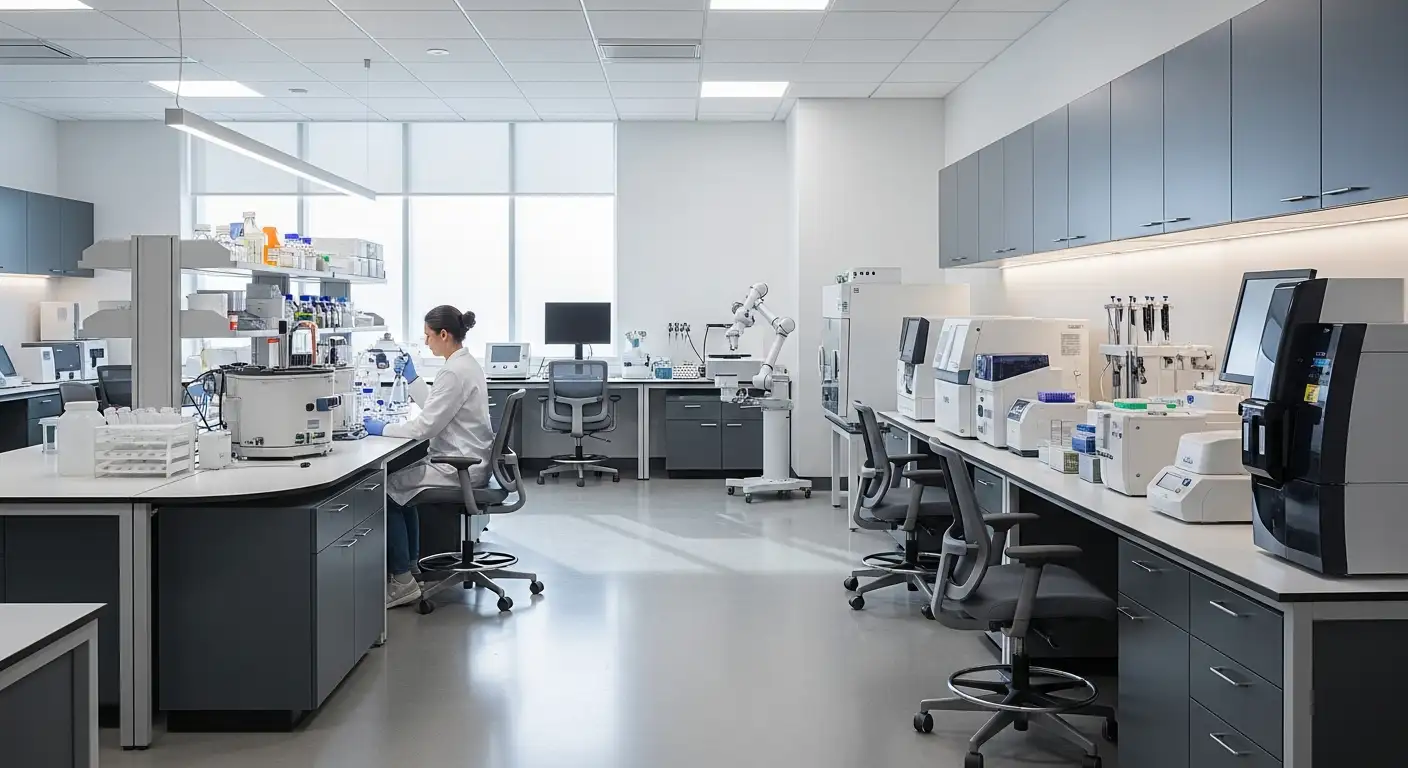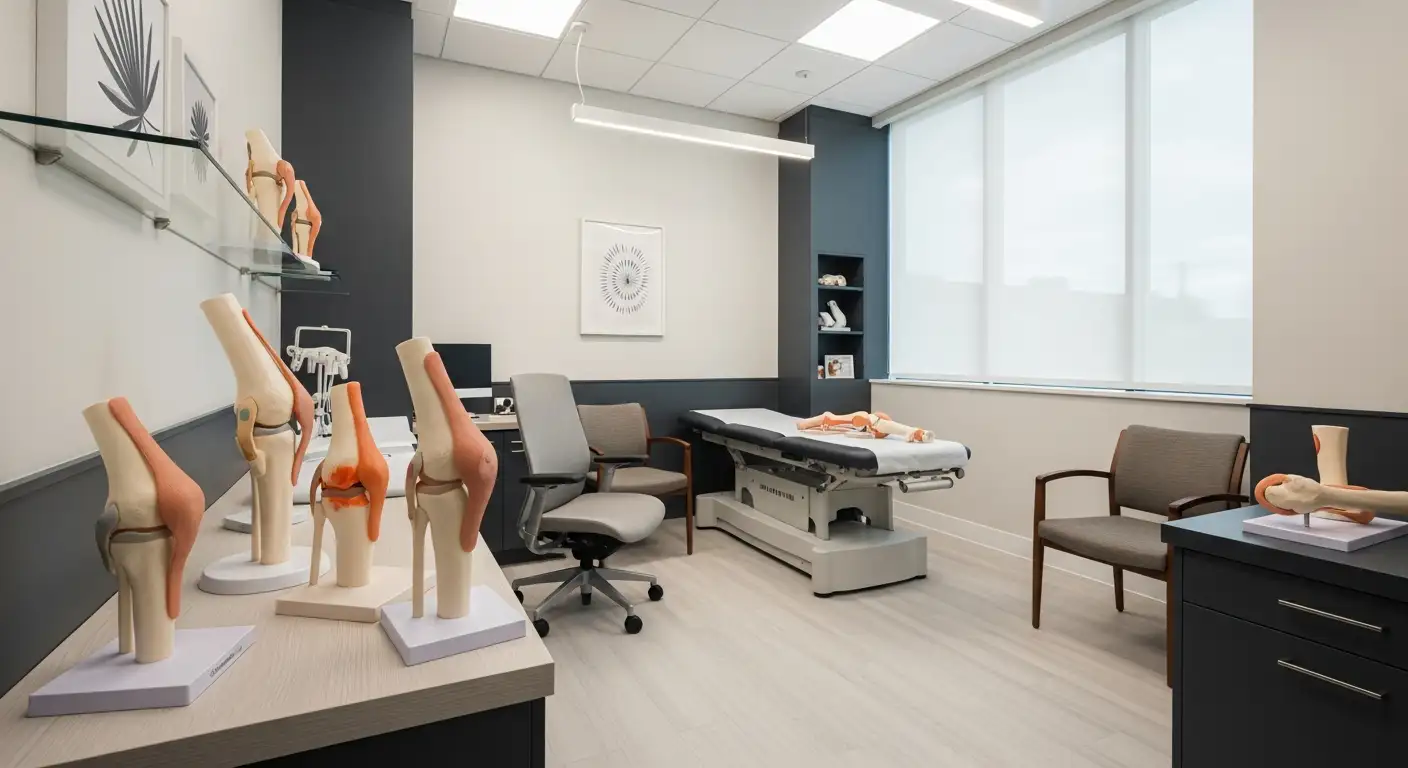Introduction to Knee Joint Concerns and Unusual Symptoms
A painless lump on the shin or near the knee can be an alarming symptom that prompts consideration of various possible causes, from benign conditions like cysts to rare tumors. This article explores knee osteoarthritis—the most common form of arthritis affecting the knee—as well as other less frequent but critical diagnoses such as synovial sarcoma, highlighting symptoms, causes, diagnostic approaches, and both conventional and emerging treatment options. Readers seeking a comprehensive understanding of knee joint conditions, especially those experiencing or concerned about lumps near the shin, will find valuable information on clinical features, management strategies, and preventative measures.
Overview of Knee Osteoarthritis and Its Impact on Joint Health
What is osteoarthritis of the knee and how does it affect joint health?
Osteoarthritis (OA) of the knee is a chronic, degenerative joint disease where the cartilage that cushions the bones in the knee joint gradually wears away. This loss of cartilage leads to direct bone-on-bone contact, resulting in pain, swelling, stiffness, and limited joint movement. OA is the most common form of arthritis affecting the knee.
How does knee osteoarthritis progress and what are the stages?
Knee OA develops slowly and is classified into four progressive stages:
- Stage 1 (Minor): Early cartilage damage with mild symptoms or none.
- Stage 2 (Mild): Slight cartilage deterioration and occasional discomfort.
- Stage 3 (Moderate): Noticeable cartilage loss, increased pain, swelling, and stiffness.
- Stage 4 (Severe): Severe cartilage loss with persistent pain, joint deformity, and significant mobility limitations.
Symptoms typically worsen with each stage, reflecting advancing joint damage.
What are the common symptoms of knee osteoarthritis?
Typical symptoms include:
- Persistent knee pain that worsens with activity
- Joint stiffness, especially after periods of rest
- Swelling and occasional warmth around the knee
- Grinding or crackling noises (crepitus) during movement
- A feeling of instability, knee locking, or the knee "giving way"
- Reduced range of motion and difficulty walking
What are the underlying causes of knee osteoarthritis?
OA arises from the gradual wearing down of cartilage due to various factors such as:
- Aging: Natural degeneration over time
- Joint injury or overuse: Past knee injuries or repetitive stress
- Obesity: Excess body weight increases pressure on knee joints
- Genetics: Family history can increase susceptibility
- Other factors: Joint deformities, inflammatory conditions, and certain diseases
These elements contribute to cartilage breakdown, leading to pain and inflammation in the knee joint.
Understanding these aspects of knee osteoarthritis is vital for early recognition and effective management to maintain joint health and quality of life.
Recognizing Symptoms and Risk Factors of Knee Osteoarthritis

What Are the Typical Symptoms and Risk Factors Associated with Knee Osteoarthritis?
Knee osteoarthritis (OA) is characterized by several hallmark symptoms that impact daily activities. Patients often report pain in the knee during movement or activity, which might temporarily ease during rest. Stiffness commonly occurs, particularly after periods of inactivity or in the morning. Swelling of the knee joint is frequent, accompanied by sensations of instability such as wobbliness or a feeling that the knee may give way.
Audible crepitus—crackling or grinding sounds during knee movement—is another noted symptom, as is the occasional locking or catching of the knee. Muscle weakness around the joint often develops, worsening joint function and discomfort.
What Risk Factors and Causes Contribute to Knee Osteoarthritis?
Several risk factors increase the likelihood of developing knee OA. Aging is the most significant, with prevalence increasing notably after age 45. Obesity is a major contributor due to the excess pressure it places on the knee joints—each pound of body weight can add up to four pounds of pressure on the knee.
Additional causes include previous knee injuries, genetic predisposition, joint deformities, and occupations or sports that exert repetitive stress on the knees. Women, particularly over 50, have a higher incidence, which may be linked to hormonal or anatomical differences.
What Signs Indicate Disease Progression?
Knee osteoarthritis progresses through four stages, starting from minor cartilage damage with mild symptoms to severe joint deterioration with persistent pain and limited mobility. Early stages involve intermittent pain and slight stiffness, while later stages can result in constant pain, greater swelling, joint instability, and bone spurs.
Patients may experience complications such as locking due to loose cartilage fragments, or increased difficulty walking. The disease can also impact mood and overall quality of life.
What Are Common Patient Experiences?
Individuals living with knee OA often describe a gradual increase in pain that hampers mobility and daily routines. Many notice symptoms worsen after physical activity but improve somewhat with rest. The grinding sensation, along with swelling and stiffness, can make simple tasks like climbing stairs or walking challenging.
Managing weight and engaging in low-impact exercises, such as walking or swimming, are often recommended by healthcare providers. Patients also commonly use supportive devices or braces to improve stability and reduce discomfort.
Diagnostic Approaches for Knee Joint Conditions Including Painless Lumps

How is knee osteoarthritis and other knee-related conditions diagnosed?
Diagnosis begins with a thorough medical history and physical examination. Clinicians assess symptoms such as joint pain, stiffness, swelling, and limited range of motion to evaluate the condition of the knee. This initial step provides essential clues about whether osteoarthritis or other joint disorders might be present.
Imaging tests play a crucial role in confirming and further characterizing the diagnosis. X-rays are commonly used to identify hallmark features of osteoarthritis, including joint space narrowing, cartilage loss, and bone spur formation. Magnetic resonance imaging (MRI) offers detailed visualization of the joint's soft tissues, such as cartilage, ligaments, and menisci. This helps detect cartilage damage and other subtle abnormalities that X-rays might miss. Computed tomography (CT) scans are occasionally utilized for complex cases where detailed bone imaging is necessary.
Blood tests are performed when inflammatory arthritis is suspected to differentiate it from osteoarthritis. These tests look for markers of inflammation or autoimmune antibodies to diagnose conditions like rheumatoid arthritis.
In cases where patients present with painless lumps near the knee or shin area—potential signs of rare conditions like synovial sarcoma—further diagnostic steps are essential. Detailed imaging studies, including MRI or ultrasound, assess the lump's characteristics. A biopsy may be required to obtain tissue samples for definitive diagnosis, distinguishing benign cysts or growths from malignant tumors.
Together, these diagnostic tools allow healthcare providers to accurately identify the type and stage of knee joint conditions and guide appropriate treatment and management plans.
Distinguishing Painless Lumps on the Shin: From Benign Cysts to Rare Tumors
What could a painless lump on the shin indicate, and what is synovial sarcoma?
A painless lump on the shin can have various causes ranging from benign to serious. Common benign causes include Baker’s cysts, which are fluid-filled sacs that develop behind the knee and can occasionally extend to the shin area. These cysts often arise due to changes or inflammation within the knee joint. Other non-cancerous lumps may be localized swelling or soft tissue masses resulting from joint irritation or injury.
Synovial sarcoma, on the other hand, is a rare but significant cause of a lump near the knee or shin. It is a type of cancer that originates from cells near joints, mainly affecting young adults. Unlike benign cysts, synovial sarcoma tends to present as a gradually enlarging, usually painless lump or bump under the skin. Over time, this tumor may cause stiffness, joint pain, swelling, or even limited movement in the affected limb.
Characteristics and symptoms of synovial sarcoma
Synovial sarcoma tumors often occur in the legs or arms near large joints such as the knee. Early signs include a painless swelling or lump that gradually increases in size. As the tumor grows, it may invade nearby healthy tissues causing pain, joint stiffness, or swelling. In rarer cases where the tumor occurs in areas like the head or neck, symptoms may include breathing difficulties or changes in voice.
The cause of synovial sarcoma is not fully understood but involves abnormal changes in cell DNA that lead to uncontrolled growth and the ability to spread to other parts of the body (metastasis). Prompt detection is vital because these tumors can be aggressive and require specialized treatment.
Importance of medical evaluation
Given the range of possible causes, any persistent, unexplained lump on the shin should be evaluated by a healthcare professional. A clinical examination combined with imaging tests such as MRI or CT scans can help distinguish benign cysts from more serious tumors like synovial sarcoma. Early diagnosis facilitates timely treatment, which may include surgery, chemotherapy, or radiation depending on the diagnosis.
Ignoring a painless lump could delay treatment and worsen outcomes if the cause is malignant. Therefore, individuals noticing new or growing lumps near their knees or shin should seek medical advice promptly to ensure accurate diagnosis and appropriate care.
Conventional Non-Surgical Treatments for Knee Osteoarthritis
Physical Therapy's Role
Physical therapy is fundamental in managing knee osteoarthritis. It focuses on strengthening the muscles around the knee, which helps stabilize the joint and reduce stress on damaged cartilage. Therapies often include tailored exercise routines such as strength training, stretching, aerobic activities, and balance exercises to improve mobility and decrease stiffness. Consistent physical therapy can also enhance joint function and overall quality of life.
Medications for Pain and Inflammation
Medications are commonly used to ease pain and reduce inflammation associated with knee osteoarthritis. Nonsteroidal anti-inflammatory drugs (NSAIDs) are typically the first-line treatment to relieve discomfort and swelling. Other medications such as acetaminophen, topical pain relievers, and corticosteroids can also be effective. Corticosteroid injections are sometimes administered for temporary relief during flare-ups, although their benefits tend to be short-term.
Lifestyle Modifications
Lifestyle changes play a critical role in slowing osteoarthritis progression and managing symptoms. Weight loss is particularly important, as excess body weight increases pressure on the knee joint, accelerating cartilage wear. Even a modest weight reduction of around 5% can improve symptoms. Incorporating low-impact, joint-friendly exercises such as walking, swimming, or cycling helps maintain joint health without causing additional harm or discomfort.
Injections
Besides corticosteroids, hyaluronic acid injections are another treatment option intended to lubricate the joint and improve mobility. However, evidence supporting their effectiveness remains limited and somewhat controversial. Other emerging injections, such as platelet-rich plasma (PRP), are under investigation but currently lack conclusive proof of benefit.
Overall, non-surgical treatments for knee osteoarthritis prioritize symptom relief and improved function. Effective management usually combines physical therapy, medication, lifestyle adjustments, and sometimes injections, tailored to the individual patient's needs and disease severity.
Physical Therapy: A Cornerstone of Knee Osteoarthritis Management

What role does physical therapy play in treating knee osteoarthritis?
Physical therapy is a fundamental component in managing knee osteoarthritis effectively. It primarily focuses on strengthening the quadriceps and surrounding muscles, which helps stabilize the joint and reduces pain. Strengthening these muscles supports the knee, alleviating some of the stress on the damaged cartilage walls.
Moreover, physical therapy improves flexibility and balance. Tailored exercise programs include stretching to enhance joint flexibility, aerobic activities to boost endurance, and balance training to prevent falls and improve coordination. These elements collectively enhance the overall joint function.
Another significant advantage of physical therapy is its ability to delay or sometimes prevent the necessity for surgical interventions such as knee replacement. By maintaining muscle strength and joint mobility, patients often experience symptom relief and improved mobility that postpones the progression to severe stages of osteoarthritis.
Physical therapy is best utilized as part of an integrated treatment approach. When combined with lifestyle changes like weight management, education on joint protection strategies, and possibly medication, it contributes to improved quality of life and functional independence. Regular supervised sessions also ensure better adherence and optimize outcomes.
In summary, physical therapy not only eases symptoms but also plays a crucial role in comprehensive knee osteoarthritis management, helping patients maintain their activity levels and delay invasive treatments.
Surgical Options for Advanced Knee Osteoarthritis: When and What to Consider

When Is Surgery Recommended?
Surgery for knee osteoarthritis is typically considered when non-surgical treatments such as physical therapy, weight loss, medications, and injections no longer provide sufficient relief. This usually corresponds to advanced stages of the disease (Stage 3 or 4), where pain and mobility issues significantly impact daily activities.
Types of Surgical Procedures
- Total Knee Replacement (Arthroplasty): This involves replacing the damaged joint surfaces with artificial implants, providing pain relief and restoring function.
- Partial Knee Replacement: Suitable when damage is limited to one part of the knee, preserving more of the natural joint.
- Osteotomy: Involves cutting and reshaping bones to shift weight away from damaged areas, usually for younger patients with localized damage.
- Arthroscopy: Minimally invasive cleaning of the joint; generally less favored due to limited benefits in osteoarthritis.
Expected Outcomes
Surgical interventions can significantly reduce pain, improve joint stability, and restore mobility. Total and partial knee replacements offer durable outcomes for severe osteoarthritis, greatly enhancing quality of life. Osteotomy can delay the need for joint replacement in select patients.
Rehabilitation Post-Surgery
Effective recovery relies on rehabilitation programs including physical therapy to strengthen muscles, improve flexibility, and restore function. Johns Hopkins and other centers provide comprehensive pre- and post-surgical care to optimize recovery and return to daily activities.
How Do Non-Surgical Treatments Compare to Surgical Options?
Non-surgical treatments remain first-line to manage symptoms and slow progression, with many patients achieving good control through lifestyle changes and medications. Surgery is reserved for those who do not adequately respond or have significant joint damage. While non-surgical methods offer symptom relief, surgery provides more definitive and long-lasting improvements in advanced cases.
Emerging and Minimally Invasive Treatments for Knee Osteoarthritis
Are there emerging treatments or technologies for knee osteoarthritis?
Yes, there are several innovative and minimally invasive treatments for knee osteoarthritis (OA) that have been developed to improve pain relief, joint function, and potentially delay the need for traditional surgery.
One promising approach is genicular artery embolization, a minimally invasive procedure that targets and reduces inflammation by blocking the small arteries supplying blood to painful areas of the knee joint. This technique aims to alleviate pain and swelling with fewer complications and a quicker recovery compared to conventional surgeries.
The recently FDA-approved MISHA Knee System represents a novel joint implant that absorbs some of the mechanical load on the knee. It is designed to enhance joint function and alleviate symptoms while offering a faster rehabilitation timeline, thus serving as an alternative option for patients seeking to postpone or avoid total knee replacement.
Biologic therapies have also gained traction. Injections of platelet-rich plasma (PRP) leverage the patient's own growth factors to stimulate tissue healing, while emerging stem cell treatments aim to regenerate damaged cartilage and joint tissues. Though these therapies show promise, ongoing research, including gene therapy trials, seeks to establish their long-term effectiveness and safety.
These advances provide additional strategies beyond traditional medications, physical therapy, or surgery, offering hope for improved management of knee OA with fewer side effects and enhanced quality of life.
Preventative Strategies and Self-Care to Manage Knee Joint Health

What strategies can help prevent or manage knee osteoarthritis effectively?
Preventing or managing knee osteoarthritis involves a combination of lifestyle modifications, exercise, weight control, and pain management techniques. Maintaining a healthy weight is crucial, as excess body weight places additional stress on knee joints, accelerating cartilage wear and worsening symptoms. Even a modest weight loss of 5% can significantly reduce knee pain and improve function.
Engaging in regular low-impact exercises such as walking, swimming, and cycling helps strengthen muscles around the knee, improving joint stability and reducing pain. Incorporating strength training, balance, and range of motion exercises further supports joint health. It is important to avoid high-impact or repetitive activities that place undue stress on the knees.
Modifying daily activities by pacing, using proper footwear, and incorporating assistive devices like braces or walking aids can reduce joint strain and prevent symptom flare-ups. Pain management may also include over-the-counter analgesics, nonsteroidal anti-inflammatory drugs (NSAIDs), and heat or cold therapy.
Additionally, patient education on self-care practices, stress reduction, and adherence to treatment plans empowers individuals to maintain quality of life and slow disease progression. Together, these strategies promote better knee joint health and functionality over time.
Summary and Outlook on Knee Conditions with Shin Lumps
A painless lump on the shin near the knee warrants careful evaluation as it can stem from several benign or serious conditions. Osteoarthritis remains the most common cause of knee pain and deformity, characterized by progressive cartilage loss and joint dysfunction. Diagnosing and managing knee osteoarthritis involves an array of clinical and imaging assessments, combined with personalized treatment strategies ranging from physical therapy and medications to advanced surgical and emerging therapies. Early intervention, weight management, and attention to symptoms improve patient outcomes and quality of life. Awareness of rare but severe causes such as synovial sarcoma highlights the importance of timely medical assessment to rule out malignancies. Advances in minimally invasive and biologic treatments offer hope for better management and reduced disability in knee joint disorders.
References
- Knee Osteoarthritis: Symptoms, Stages, Causes & Treatment
- Arthritis in Knee: Signs, Symptoms, Causes & Treatment
- Osteoarthritis: Symptoms, Diagnosis, and Treatment
- Knee Arthritis
- Synovial sarcoma - Symptoms and causes
- Osteoarthritis of the Knee - Symptoms & Treatment | MHA
- Knee Osteoarthritis: Early Signs, Causes, Diagnosis, ...
- Knee Osteoarthritis: Symptoms & Causes





